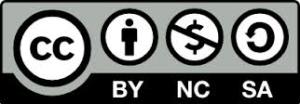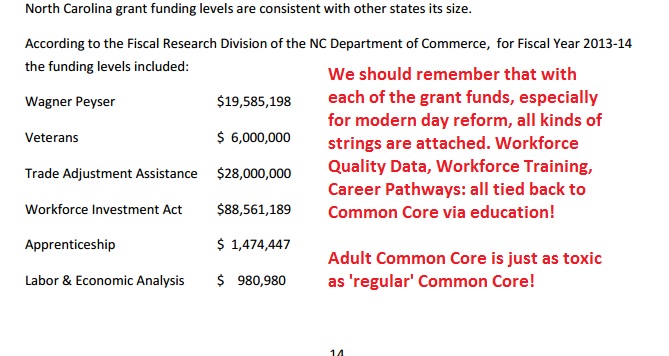How many of us have, by now, seen the image below? How do you think it’s connected to Common Core? DO you think they are connected? I wasn’t so sure, but now I know!

“Creative Commons”:
If you’re like me, you have seen these. With so much “CC” stuff out there, I was under the impression the “CC” you see above in some way denoted “Common Core”. However, I was wrong. It stands for “Creative Commons”, as in “Creative Commons Licenses. The non-profit company got is start in 2001. Supposedly to help everyone share their creative projects freely. The images you see above ARE code. Each of them denotes the level of control being expressed by the person, company, or group holding the CC License. While there are tons of tutorials out there telling you what each symbol means, I’m not diving into that. As you know by now, I’m looking behind the obvious.
Gates Foundation:
Yes, the Gates Foundation is an ardent supporter of the CC Licensing. So much so that the Foundation has awarded Creative Commons with $8,755,145.00 in grants for ‘college readiness’ and ‘postsecondary success’ since 2011. (see: http://www.gatesfoundation.org/How-We-Work/Quick-Links/Grants-Database#q/k=creative%20commons)
2011’s “postsecondary success” grant’s purpose: ‘to provide federal grantees support for quality development of interactive curricula, open licensing, technical interoperability, collaboration between like projects, and widespread adoption of open curricula by community colleges and states.’ We know, from past posts here and elsewhere that community colleges are aligned or are being aligned to Common Core. Here in NC, all 58 of our community colleges are aligned with the Standards. (I’ve wrote that up about a month ago)
2011’s ‘college readiness’ grant’s purpose: ‘to partner in the development of the Learning Resource Metadata Initiative, to help identify learning resources that complement Common Core State Standards.’ This is globally, including America.
2013’s ‘college readiness grant purpose: ‘general operations’ for not only the US, but the global community.
Center for Public Domain:
Housed at Duke University (see: http://web.law.duke.edu/cspd/), known as the Center for the Study of Public Domain which began in 2002, according to their website.
Duke University has been the recipient of many Gates Foundation grants, including ‘postsecondary success’ via developing & implementing a MOOC (massive online open course) MOOCs impact students everywhere.
Originally, the name was Center for Public Domain, founded in 2000, by the same man who helped to start RedHat Software, Bob Young. Here’s an somewhat related article: http://www.zdnet.com/bob-young-talks-about-the-origins-of-red-hat-7000035051/)
If you follow Mr. Young’s trail, you’ll find he’s big on sharing freely. He’s behind Lulu (a global open course site) More on his bio: (http://www.csc.ncsu.edu/corporate_relations/fi_lit/214)
Learning Resource Metadata Initiative:
From the LRMI’s ‘about’ website page, the entire initiative was started to help Common Core Standards along. The exact wording, “This initiative started with the creation of tags in accordance with the Common Core Standards.” What companies are behind the LRMI?
Creative Commons and the Association of Educational Publishers.
From an article featured on EdTech Digest (http://edtechdigest.wordpress.com/2012/12/14/the-lrmi-a-common-sense-method-for-finding-common-core-resources/)
The following excerpt is regarding locating CCSS resources on-line, “That’s where the Learning Resource Metadata Initiative (LRMI) comes in. Launched in June 2011 and co-led by the Association of Educational Publishers and Creative Commons, the LRMI is working to create and implement a standard tagging specification for learning resources that enables alignment to learning standards, such as the Common Core. The LRMI’s work extends the effort by Schema.org (a consortium involving search engine giants Microsoft Bing, Google, Yahoo!, and Yandex) to establish a standard method of tagging Web pages across the Internet.”
LRMI is also being funded by the Gates Foundation and the Hewlett Foundation. The Initiative began in 2011. Common Core aligning was to be completed by 2012. Note this sentence from the press release, ‘The initial scope will at a minimum cover the Common Core State Standards for K-12.’ Here’s the entire press release: http://www.lrmi.net/the-association-of-educational-publishers-and-creative-commons-to-co-lead-learning-resources-framework-initiative-2
One last huge thing you need to know about LRMI, it’s ‘stewardship’ is under an American based non-profit group, Dublin Core Metadata Initiative. (DCMI), which is a project of the Association for Information Science and Technology. However, Korea and Japan are also involved in housing the Initiative’s website and registry. This DCMI has links to International Standards and American National Standards. (To find these, go to: http://dublincore.org/specifications/ and click on ‘Dublin Core Metadata Element Set’.
Actions:
Saturday’s posts are to help lead you in some active way to combat the CCSS Machine. Below are related resources you can access to learn more about them, their connects to CCSS so you can remain informed, so you know where to focus your anti CC campaigns.
- Related resource from 2012, a description of how the LRMI was being developed: http://www.ofthat.com/2012/08/common-identifiers-for-common-core.html
- Related resource for finding not only CCSS aligned resources, but all the standards each state is using. Found at the Achievement Standards Network. The ASN was created to address the problem that not every state is CCSS aligned. ‘The Achievement Standards Network is an open access service to competency framework data. It was originally developed by Professor Stuart Sutton. PhD, JD, LLM, at the Information School, University of Washington, in collaboration with JES & Co. through NSF awards DUE-0121717 and DUE-0840740 with subsequent support from the Bill & Melinda Gates Foundation, and licensed to JES & Co. under agreement with the University of Washington. As of February 2014, the ASN was owned operated by D2L.’
See this website: http://asn.jesandco.org/resources/ASNJurisdiction
- All this open sharing creates massive amounts of data, here’s a related source on how that data is being collected and what happens to all of it. State Educational Technology Directors Association (SETDA) is another non profit agency created to help in all the efforts associated with ed data. You will really want to delve into this website.
Website: http://www.setda.org/priorities/interoperability/
- A downloadable document you’ll want to grab, is the SETDA’s “Out of Print” resource describing what will happen when all the traditional textbooks are abandoned.
- Finally, watch this short video for where all this on-line, open sharing via the Web is leading.
[vimeo 110256895 w=500 h=281] <p><a href=”http://vimeo.com/110256895″>Web standards for the future</a> from <a href=”http://vimeo.com/w3c”>W3C</a> on <a href=”https://vimeo.com”>Vimeo</a>.</p>

Thank you!